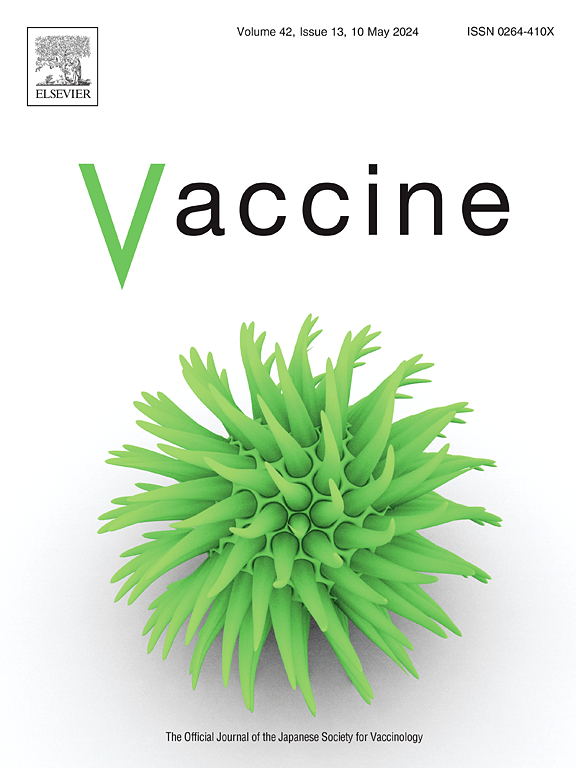Mucosal vaccination against SARS-CoV-2 using recombinant influenza viruses delivering self-assembling nanoparticles
IF 4.5
3区 医学
Q2 IMMUNOLOGY
引用次数: 0
Abstract
Recombinant influenza viruses are promising vectors that can bolster antibody and resident lymphocyte responses within mucosal sites. This study evaluates recombinant influenza viruses with SARS-CoV-2 RBD genes in eliciting mucosal and systemic responses. Using reverse genetics, we generated replication-competent recombinant influenza viruses carrying heterologous RBD genes in monomeric, trimeric, or ferritin-based nanoparticle forms. Following intranasal immunisation, mice developed potent serological anti-RBD responses, with ferritin nanoparticles superseding monomeric or trimeric RBD responses. While parenteral and mucosal immunisation elicited robust anti-RBD IgG in serum, mucosal immunisation seeded respiratory IgA, RBD-specific lung-resident memory and germinal centre (GC) B cells. In animals with prior intramuscular vaccination, intranasal boosting with recombinant influenza vectors augmented mucosal IgG, IgA, GC and memory B cells, and SARS-CoV-2 lung neutralising titres. Recall of RBD-specific memory B cells via antigen re-exposure in the lung increased antibody-secreting cells in the lung-draining lymph nodes, with maintenance of lung GC B cells. Recombinant influenza-based vaccines effectively deliver highly immunogenic self-assembling nanoparticles, generating antibodies and B cells in the respiratory mucosa. This strategy provides a tractable pathway to augment lung-localised responses against recurrent respiratory viral infections.
利用重组流感病毒递送自组装纳米颗粒的粘膜疫苗接种SARS-CoV-2。
重组流感病毒是有希望的载体,可以加强抗体和驻留淋巴细胞反应在粘膜部位。本研究评估了带有SARS-CoV-2 RBD基因的重组流感病毒引发粘膜和全身反应的情况。利用反向遗传学,我们以单体、三聚体或基于铁蛋白的纳米颗粒形式产生了携带异源RBD基因的具有复制能力的重组流感病毒。经鼻内免疫后,小鼠产生了有效的血清学抗RBD反应,铁蛋白纳米颗粒取代了单体或三聚体RBD反应。虽然肠外免疫和粘膜免疫在血清中激发了强大的抗rbd IgG,但粘膜免疫则在呼吸道中植入了IgA、rbd特异性肺驻留记忆和生发中心(GC) B细胞。在先前肌肉注射疫苗的动物中,用重组流感载体鼻内增强粘膜IgG、IgA、GC和记忆B细胞,以及SARS-CoV-2肺中和效价。通过在肺中再次暴露抗原来召回rbd特异性记忆B细胞增加了肺引流淋巴结中的抗体分泌细胞,同时维持了肺GC B细胞。重组流感疫苗有效地递送高度免疫原性的自组装纳米颗粒,在呼吸道黏膜中产生抗体和B细胞。这种策略提供了一种易于处理的途径来增强肺部局部对抗复发性呼吸道病毒感染的反应。
本文章由计算机程序翻译,如有差异,请以英文原文为准。
求助全文
约1分钟内获得全文
求助全文
来源期刊

Vaccine
医学-免疫学
CiteScore
8.70
自引率
5.50%
发文量
992
审稿时长
131 days
期刊介绍:
Vaccine is unique in publishing the highest quality science across all disciplines relevant to the field of vaccinology - all original article submissions across basic and clinical research, vaccine manufacturing, history, public policy, behavioral science and ethics, social sciences, safety, and many other related areas are welcomed. The submission categories as given in the Guide for Authors indicate where we receive the most papers. Papers outside these major areas are also welcome and authors are encouraged to contact us with specific questions.
 求助内容:
求助内容: 应助结果提醒方式:
应助结果提醒方式:


